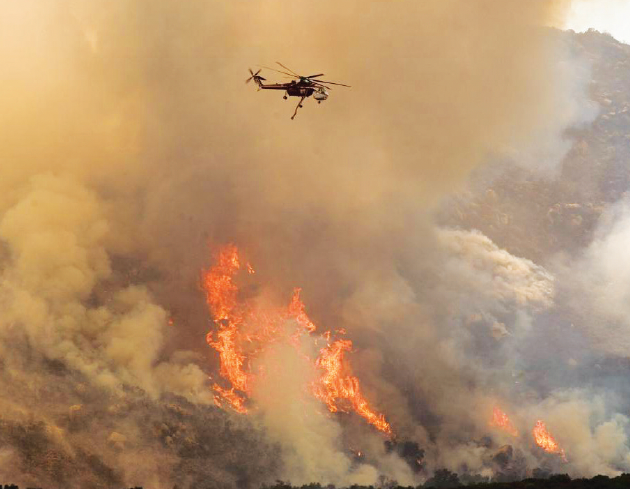
Discoveries
Longevity Gene Identified in Golden Retrievers
UC Davis researchers have identified a gene associated with longevity in golden retrievers, one of the most popular dog breeds. Individuals in the breed have an up to 65% chance of dying from cancer and the team wanted to find out if certain genetic factors could improve their survival rate. Instead of looking for genes associated with cancer, however, they focused on genes associated with longer life. The gene they identified happens to be involved with both.
The gene, HER4, is in the same family of human epidermal growth factor receptors as HER2, a gene well known for its association with human cancer. The researchers reported in the journal GeroScience that golden retrievers with certain variants of the gene lived about two years longer on average. In particular, HER4 is known to interact with hormones such as estrogen, meaning that the variant could be most important to the longevity of female dogs compared to male dogs.
This gene is likely one of many involved in this complex puzzle. The next step will be to enroll more golden retrievers to see if these results can be reproduced and investigate how the variant influences expression or function of the gene.

Coyotes Transfer Tick-Borne Illness
Rocky Mountain Spotted Fever (RMSF), caused by the bacterium Rickettsia rickettsii, is a tick-borne illness responsible for hundreds of human fatalities in recent decades, particularly around the western U.S.-Mexico border.
The vector for the pathogen, the brown dog tick (Rhipicephalus sanguineus), is spread by free-roaming dogs. However, a study published in the Journal of Wildlife Diseases by Professor Janet Foley, Master of Preventive Veterinary Medicine student Jacob Marcek, and colleagues reports that coyotes may also be carriers.
“There are a lot of reports of coyotes entering urban and suburban areas and having little fear of humans,” Foley explained. “We thought that, since coyotes can travel long distances, they could be carrying brown dog ticks into new areas and spreading the epidemic.”
The researchers found that a majority of the coyotes they trapped in Baja California, Mexico, had RMSF antibodies. They were also regularly accessing human-inhabited areas and socializing with free-roaming dogs. One male coyote frequented dairies, mingling with livestock that could also serve as prey for hungry ticks. These results suggest that traveling coyotes could indeed be transferring RMSF across northern Mexico and the southwest U.S. as they roam.
The researchers hope their results can inform strategies to stop RMSF transmission, such as education on wildlife tick vectors and spaying or neutering dogs.

Lasting Effects of Early Wildfire Smoke Exposure
Eighteen million years ago, a genetic duplication event coincided with the evolutionary split between horses and their four-toed, forest- browsing ancestors. A recent study in the journal PLOS ONE, led by Dr. Danika Bannasch and Kevin Batcher, a Ph.D. student in her lab, investigated specific genetic duplications in horses, finding evidence of important roles for these elements.
A certain class of genetic variation in animals is caused by an element called LINE-1 (long interspersed nuclear element 1), which is still active and capable of making new copies of itself and sometimes copies of other genes, called retrocopies. The study investigated these extra gene copies in horses and other domestic and wild equids. Of the 437 retrocopies identified, only five were shared between horses and other equids, indicating that the majority of the extra copies formed after the species experienced an evolutionary split.
In particular, a retrocopy of the gene Ligand Dependent Nuclear Receptor Corepressor Like (LCORL) was present in all equids (horses, donkeys, zebras) but absent from other species of odd-toed ungulates alive today, such as rhinoceroses and tapirs. This retrocopy was also duplicated many times within equids, with the majority of LCORL tissue expression in horses and donkeys originating from these retrocopies rather than the parent gene. Bannasch said this role of LCORL was exciting to identify since the gene is also known to have a significant role in body size across mammals.
The original retrocopy, estimated to have occurred 18 million years ago, happened during the period when equids experienced an increase in body size, a reduction in the number of toes, and changes in their teeth. The age of the LCORL retrocopy and the large number of expressed LCORL retrocopies in today’s equids provide evidence of their function in equid evolution.

Creating Renewable Energy from Waste
Dairy digesters break down manure and produce methane, a form of renewable energy, while also capturing greenhouse gases and improving water quality and manure’s nutrient value. They are installed on California dairy farms to manage manure thanks to funds from the California Department of Food and Agriculture. Grants of more than $200 million to various dairy farms supported approximately 133 dairy digester projects between 2015 and 2022.
The technology uses a variety of bacteria to break down manure under anaerobic conditions, providing an option for sustainable waste treatment. The process reduces greenhouse gas emissions and produces renewable energy in the form of biogas, while also reducing odor and pathogens. Research by Pramod Pandey, a UC Cooperative Extension specialist, indicates that biogas produced from the manure of two to three cows could provide the daily energy needs for a small home.
Planning, permitting, designing, and building digesters on farms takes time and there is room for improvement. However, many experts and dairy farmers see these projects as a step in the right direction to making the dairy industry more sustainable.

Bright Lights Threaten Big Cats
A UC Davis study found that mountain lions avoid places with artificial light, even during the day. The finding adds to the list of challenges faced by big cats in the region, where scientists have warned they may face extinction within decades.
The study, published in the journal Philosophical Transactions of the Royal Society B, carries implications for the conservation of this sensitive species, and for wildlife crossing proposals. The authors described ways to limit light impacts in their design guidance for the Wallis Annenberg crossing over U.S. Highway 101, which broke ground in April 2022, and for a newly proposed wildlife crossing at Interstate 15 near Temecula.
The researchers used the locations of 102 radio-collared mountain lions monitored in California between 2001 and 2022 by wildlife veterinarians with the school’s Karen C. Drayer Wildlife Health Center, the California Department of Fish and Wildlife, and other partners. They modeled the lions’ distribution relative to nearby artificial lights, developments, sky glow (diffuse light in the night sky from both natural and ground-based sources), and moonlight. Findings showed that sky glow and moonlight did not influence the presence of mountain lions, but artificial light at night from nearby ground sources did.
These results imply that mountain lions likely avoid human-made passages that are meant to provide safe freeway crossings. Efforts to block lights from nearby roadways may be needed at these crossing structures. This data could also potentially be used to deter the lions from areas with livestock, thereby reducing losses and the subsequent killing of mountain lions in response.
